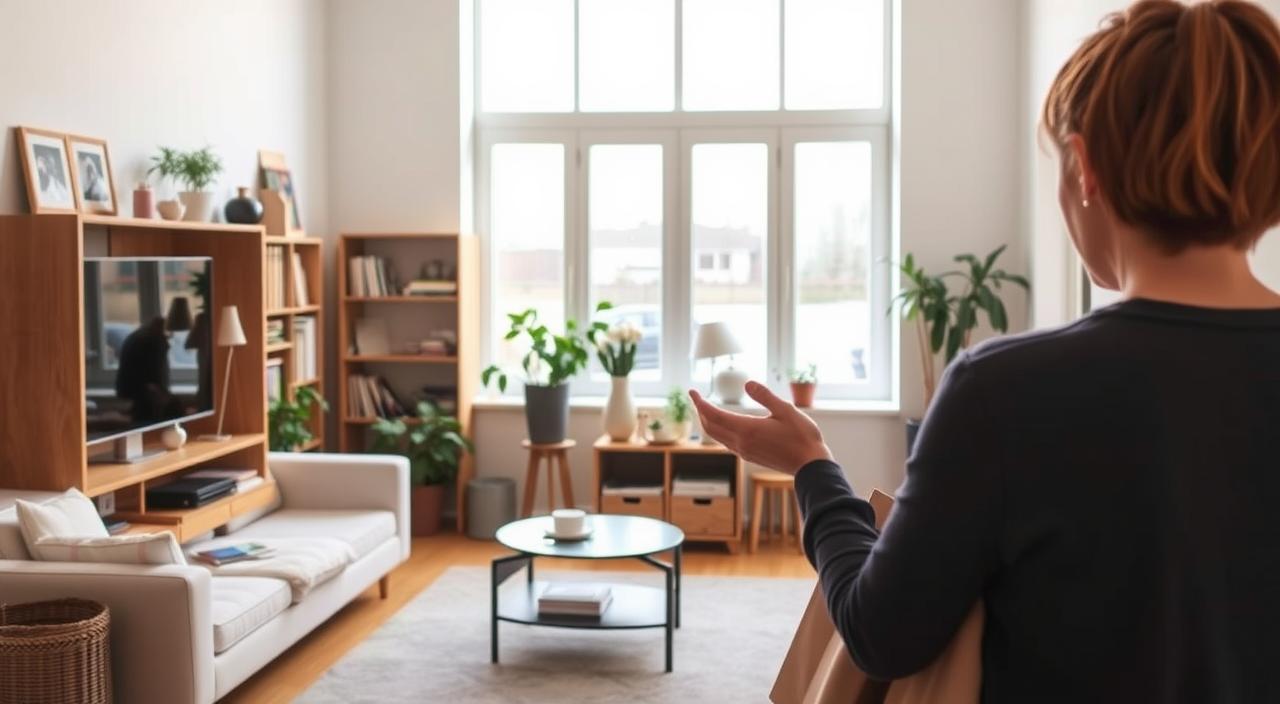Living in the capital can feel overwhelming without clever organisation. With limited space and constant temptations to buy more, many residents turn to minimalism tips London experts recommend — and the ‘One In, One Out’ rule stands out as one of the most effective strategies. This principle ensures that for every new item entering your home, one existing item leaves, keeping your surroundings balanced and clutter-free.

This mindful approach supports a sustainable lifestyle and mental calm. Instead of accumulating possessions, Londoners are learning to curate spaces filled only with items that serve genuine purpose and spark joy. It’s minimalism adapted to the pace and limitations of urban living.
Key Takeaways
- The ‘One In, One Out’ method helps maintain lasting balance in compact London homes.
- Decluttering fosters calm, reduces stress, and enhances focus.
- Prioritising quality over quantity leads to a more sustainable lifestyle.
- Regular maintenance routines keep clutter away permanently.
- Minimalism improves both mental wellbeing and environmental impact.
Understanding the ‘One In, One Out’ Philosophy
Minimalism thrives on purpose. The ‘One In, One Out’ mindset embodies intentional living — where every possession earns its place. Instead of filling your flat with unused items, you create a collection that reflects your current needs and values.
This approach shifts focus from material gain to mindful ownership. The fewer possessions you have, the more freedom and mental clarity you enjoy. By managing what enters and exits your home, you develop a healthy rhythm that supports long-term organisation.
Why Minimalism Matters for Londoners
City life often comes with high rents and limited floor space. Adopting minimalism allows you to reclaim control over your surroundings. It’s not just about a tidy home — it’s a lifestyle choice with measurable benefits for mental health, finances, and the planet.
1. Mental Wellbeing
A 2011 Princeton University study found that visual clutter competes for your attention, reducing focus and increasing stress. A clear space promotes a clear mind. When you let go of excess, you open room for calm, creativity, and rest.
2. Environmental Impact
Minimalism reduces unnecessary consumption. Owning fewer, higher-quality items means less waste heading to landfill. This aligns with London’s growing sustainability goals and zero-waste movements promoted by organisations such as Zero Waste Europe.
3. Financial Freedom
Fewer purchases translate to healthier finances. Instead of chasing trends, you invest in durable goods that last longer and save money over time. Thoughtful spending makes your home — and your wallet — feel lighter.
Minimalism Tips London: Putting the Rule into Practice
The simplicity of ‘One In, One Out’ makes it easy to apply. Before bringing anything new home, ask:
- Do I have space for it?
- What will it replace?
- Does it genuinely add value to my life?
This mindful questioning instantly curbs impulse shopping and strengthens intentional decision-making.
Everyday Examples
| New Item | Remove One Item | Result |
|---|---|---|
| New coat | Donate an old jacket | Balanced wardrobe |
| Kitchen gadget | Recycle unused appliance | Less cluttered counter |
| New book | Pass along a finished one | Space for learning |
| New décor | Sell or gift old item | Fresh, renewed home |
This small habit maintains order naturally and supports sustainable consumption — without harsh restrictions.
How to Start a Minimalist Decluttering Journey
1. Begin Small
Focus on one area at a time — a drawer, shelf, or wardrobe. Immediate results keep you motivated.
2. Apply the One-Year Rule
If you haven’t used something in twelve months, it’s probably time to let it go. London’s weather cycles make this rule especially useful for clothing.
3. Use Donation Points
Charity shops across the city — such as those listed on The British Heart Foundation’s donation page — accept gently used items. Giving your belongings a second life supports the community and keeps materials out of landfills.
The Emotional Side of Letting Go
Decluttering isn’t just physical — it’s emotional. Many Londoners hold onto items “just in case.” The key is recognising that memories live in our experiences, not our possessions.
Try photographing sentimental items before parting with them. This preserves the memory while freeing space. Over time, the emotional relief of an uncluttered home outweighs the temporary discomfort of parting with things.
Building a Capsule Wardrobe
Fashion takes up surprising space in small London flats. A capsule wardrobe — 30–40 timeless pieces that mix and match — is a cornerstone of minimalist living.
Advantages of a Capsule Wardrobe
| Approach | Number of Items | Focus | Benefit |
|---|---|---|---|
| Fast fashion | 100+ | Trends | High turnover |
| Capsule wardrobe | 30–40 | Timeless styles | Easy outfit selection |
| Quality investment | 20–30 | Durability | Lower long-term cost |
Neutral tones such as beige, navy, and grey coordinate effortlessly. Every piece earns its space, reducing decision fatigue each morning.
For more inspiration, explore guides like Capsule Wardrobe Guide by Good On You — a sustainability resource that rates ethical clothing brands.
Reducing Digital and Mental Clutter
Minimalism extends beyond your physical home. Digital clutter — overflowing inboxes, endless notifications, unused apps — also weighs heavily on your mental load.
Digital Decluttering Steps
- Unsubscribe from unused newsletters.
- Organise folders for documents and media.
- Limit screen time by setting app usage boundaries.
- Use cloud storage to back up essentials and delete duplicates.
Mindfulness apps like Headspace or journaling platforms like Notion can help you maintain digital calm and structured thinking.
Strategic Spending and Mindful Consumption

Minimalism doesn’t forbid shopping — it teaches you to purchase consciously. Before buying, ask:
- Does it serve a genuine purpose?
- Is it ethically made and durable?
- Could I borrow or buy second-hand instead?
Choosing quality items over disposable ones reduces waste and supports sustainability. Many Londoners now explore second-hand marketplaces like Gumtree or community swap events to find useful items sustainably.
Spending Focus Comparison
| Spending Type | Impact on Finances | Long-Term Value |
|---|---|---|
| Impulse shopping | Quick gratification | Minimal retention |
| Conscious investing | Controlled outgoings | Higher satisfaction |
| Quality essentials | Fewer replacements | Long-term savings |
Redirecting your money toward experiences — concerts, travel, learning — delivers greater happiness and life satisfaction.
Designing a Minimalist London Home
1. Choose Multi-Functional Furniture
Compact living demands smart furniture. Look for:
- Ottoman beds with hidden storage
- Foldable desks doubling as shelves
- Sofa beds for guests
Each piece should justify its space with dual purpose.
2. Optimise Light and Space
- Use mirrors to reflect natural light.
- Paint walls in soft, neutral tones.
- Install vertical shelving to clear floors.
These design tweaks make even small flats feel airy and inviting.
3. Incorporate Green Elements
Plants create serenity without adding visual chaos. Opt for low-maintenance species like snake plants or peace lilies to enhance air quality naturally.
Sustainable Living Through Minimalism

Minimalism and sustainability go hand in hand. By buying less and choosing better, you reduce your carbon footprint and support ethical production.
Eco-Friendly Habits to Adopt
- Replace single-use plastics with reusable containers.
- Shop at local zero-waste stores such as those listed on Zero Waste Map UK.
- Carry a reusable cup for your daily coffee.
- Buy seasonal produce from London’s farmers’ markets.
| Sustainable Choice | Environmental Benefit | Where to Find |
|---|---|---|
| Refillable products | Reduces packaging waste | Zero-waste shops |
| Ethical clothing | Supports fair labour | Online UK retailers |
| Local produce | Lowers transport emissions | Borough Market |
| Reusable bottles | Cuts plastic use | Widely available |
Each decision contributes to a greener city and healthier planet.
Maintaining Clutter-Free Living
Decluttering once isn’t enough — consistency matters. The most successful minimalists build maintenance routines that take just minutes a week.
Weekly Maintenance Routine
- Spend 15 minutes each Sunday reviewing surfaces and drawers.
- Apply the one-minute rule — if it takes less than a minute, do it now.
- Reassess your wardrobe seasonally to remove what’s no longer worn.
- Keep a small donation box near your wardrobe or entrance.
If you’re unsure about something, store it temporarily in a “maybe box.” After 30 days, if you haven’t missed it, donate or recycle it. This prevents regret while keeping your home organised.
Real-Life Minimalism in London
Minimalism in London isn’t limited to design lovers. It’s a growing movement across all age groups. From young professionals in studio flats to families embracing sustainable habits, the appeal lies in simplicity.
For more London-focused lifestyle inspiration, explore guides such as Rubbishman’s blog on family decluttering tips, which shares real-life examples of maintaining order in city homes.
Conclusion
Minimalism isn’t about deprivation — it’s about intentional abundance. The ‘One In, One Out’ rule gives Londoners a framework to enjoy meaningful possessions while avoiding chaos. By curating your belongings, you gain peace of mind, financial freedom, and environmental responsibility.
These minimalism tips London residents love are timeless:
- Keep only what adds value.
- Buy consciously.
- Donate regularly.
- Maintain small daily habits.
A minimalist lifestyle creates space — not just in your home, but in your life. Less clutter means more clarity, freedom, and joy in the heart of one of the world’s busiest cities.



